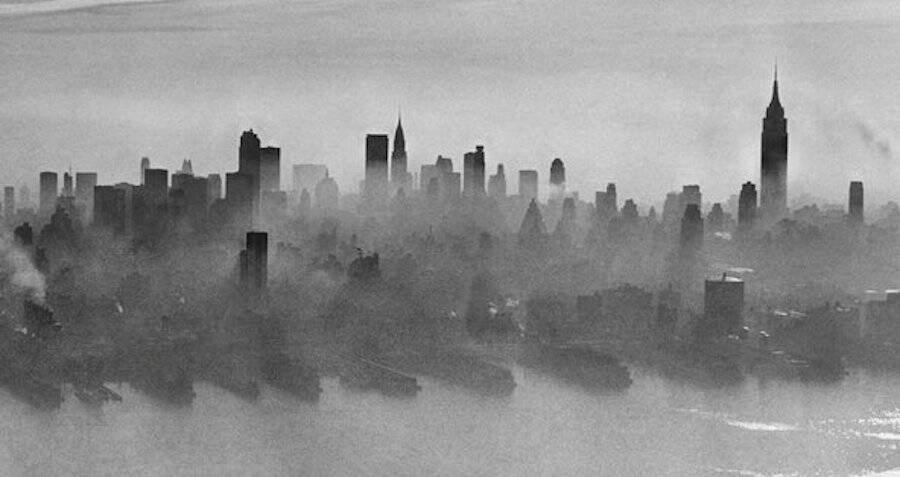PERSONAL HEALTH: NOTABLE AIR POLLUTION EVENTS IN HISTORY
by The RZ Team
Air pollution is one of the biggest breathing hazards around to date and is responsible for roughly 5.5 million premature deaths around the world. Not to mention, a recent major study has found a link between cardiac arrests and exposure to particulates. But is air pollution a new issue? As it turns out, air pollution problems are not exclusive to the 21st century.
In fact, smoke-related air pollution Dates back to ancient Rome and other large-scale air pollution has been noted as early as 13th century London, which worsened in the 16th century and onwards. As industrialization increased around the world, the more air pollution became a focal point of discussion throughout history and into modern times.
Some of the most notable and severe air pollution incidents in history include:
MEUSE RIVER VALLEY FOG
In December of 1930 a seemingly-normal fog made its way into the Meuse River valley in Belgium. Soon after, the weather formation began to cause excessive coughing and choking, mystifying doctors in the area. Over 3,000 inhabitants of nearby towns and villages fell ill, resulting in the death of 65 people and thousands of livestock.
The cause was later determined to be a result of a combination of naturally forming fog and the sulfur dioxide emissions produced by a large amount of coal-burning in the valley.

ST. LOUIS SMOG
In earlier days of St. Louis, MO, each winter proved to be incomplete without coal-smoke pollution - the city kept itself warm in the winter months by burning soft coal. Their cheap coal came at the cost of air quality; St. Louis was considered the worst in the nation at the time.
This burning cycle eventually resulted in what came to be known as On Black Tuesday, St. Louis appeared to be shrouded in partial nightfall in the middle of the day. Air quality and visibility suffered greatly and much of the city required headlights just to get around. St. Louis went on to have nine similarly smoky days the rest of that year, prompting further action to be taken by city’s officials in efforts to improve air quality.
The 1939 St. Louis smog was a severe smog episode that affected St. Louis, Missouri on November 28, 1939. Visibility was so limited that streetlights remained lit throughout the day and motorists needed their headlights to navigate city streets.

DONORA SMOG
In October of 1948, the Donora Smog hit the small Pennsylvanian community. Instead of another ‘average’, hazy day that came and passed, large clouds of polluted air by a weather inversion from readily moving along. Of Donora’s 14,000 total residents, 6,000 were afflicted by toxic air – 26 lost their lives. To this day, the Donora Smog crisis is considered the worst air pollution incident to occur in the United States and one of the worst in the world.
GREAT SMOG OF LONDON
In December of 1952, a bout of cold weather caused Londoners to burn more domestic coal to heat their homes. Similar to the weather inversion that Donora experienced, a large fog rolled to mix with soft-coal smoke, and it was confined to the city for four days. Visibility was reduced to a few meters and the dense fog was so pervasive that it seeped indoors.
The Great Smog of London resulted in 4,000 deaths in at the time of the incident. Today, however, experts estimate that the Great Smog of London led to anywhere from 8,000 – 12,000 total deaths. This event prompted the British Parliament to implement the Clean Air Act of 1956

NEW YORK CITY SMOG
Like other major cities during the time period, New York experienced a large amount of air pollution from the 1950's to 1960's. New York City crises in 1953 and 1963 each claimed hundreds of lives. Stagnant air again was the culprit for an extreme air pollution crisis, this time over New York’s Thanksgiving weekend in 1966. Citizens were encouraged to stay indoors as the smog - made up largely up carbon monoxide, sulfur dioxide and smoke – hung over the metro area, pushing the city into a first-stage alert. While claims vary, some estimates report that up to 200 people were killed.
Ultimately, New York’s smog crises and the Donora Smog became major catalysts for the 1967 Air Quality Act, which later developed into the Clean AIR ACT(CAA) in 1970 as these issues achieved greater national awareness.

Although many changes have taken place to improve air quality throughout history, it is still a regular issue in many areas of the world. If you live in areas where smog and haze are common, don’t forget the importance of staying protected to Breathe Safe.
RZ AIRFLOW Promotes Clean Air and Social responsibility

